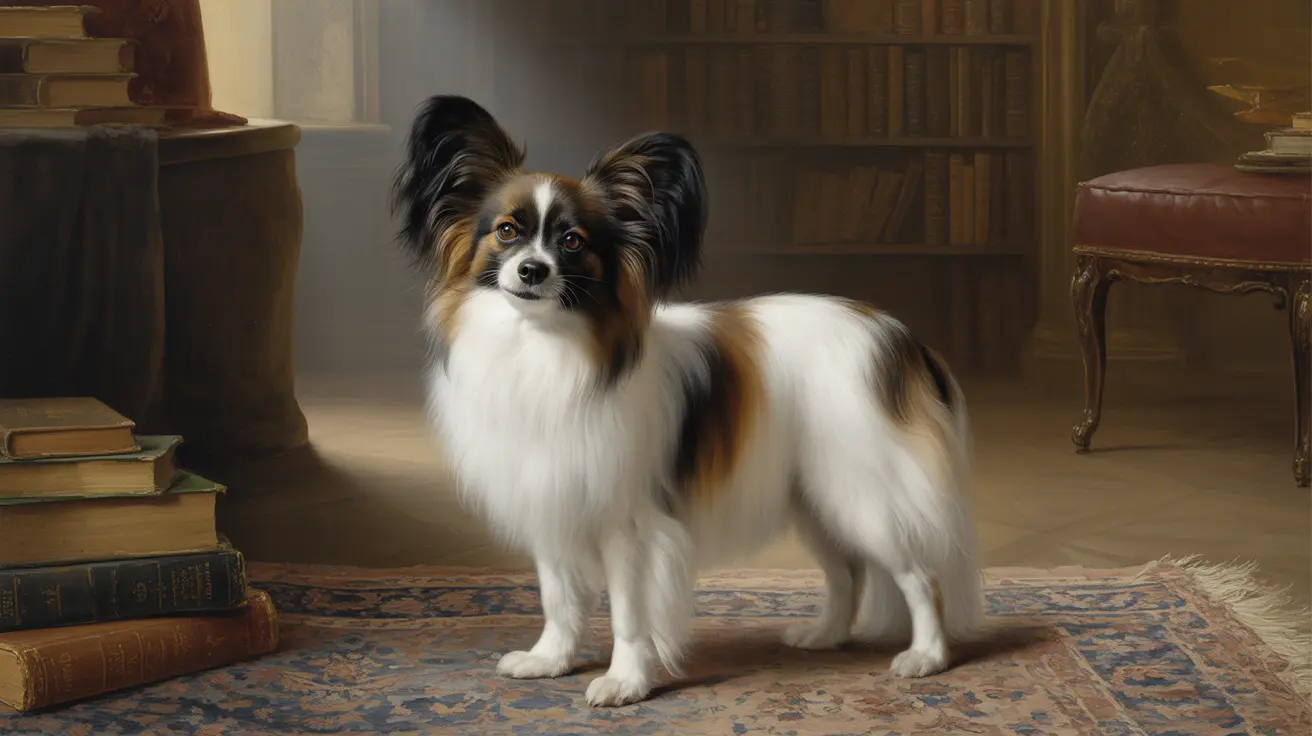The Papillon dog breed, with its distinctive butterfly-like ears and elegant appearance, has captivated dog lovers for centuries. These charming companions have an incredibly rich history that spans over 700 years, originating from European nobility and evolving into the beloved pets we know today.
From their early days as Continental Toy Spaniels to their modern recognition as intelligent and adaptable companions, the story of the Papillon's development offers fascinating insights into both canine breeding history and European cultural heritage.
The Ancient European Origins of the Papillon
The Papillon's story begins in the courts of Europe, where they first emerged as Continental Toy Spaniels. These elegant dogs were particularly favored in Italy and Spain during the 16th century, with some of the earliest documented appearances in paintings by the renowned Italian artist Titian.
The breed's development was closely tied to European nobility, who prized these small companions for their luxurious coats and affectionate nature. Their popularity spread through royal courts, where they served not only as cherished pets but also as status symbols among the aristocracy.
Evolution of the Distinctive Butterfly Ears
The most notable feature of the Papillon breed - their upright, butterfly-like ears - wasn't always characteristic of these dogs. Originally, all members of the breed had dropped ears, known today as the Phalène variety (French for "moth"). The erect-eared variety, which gave rise to the name "Papillon" (French for "butterfly"), didn't become prevalent until the late 19th century.
Both ear types can still appear in the same litter today, though the butterfly-eared variety has become more popular and recognizable. This unique feature, combined with their silky coat and plumed tail, creates the breed's distinctive appearance that we know and love.
Historical Purpose and Royal Connections
Unlike many breeds developed for specific working purposes, Papillons were bred primarily as companion animals. They excelled in their role as lap dogs and foot warmers for nobility, particularly among French and Spanish aristocratic women. Their small size and warm, silky coats made them perfect for this purpose.
Perhaps most famously, these dogs were associated with Marie Antoinette, who reportedly carried her beloved Papillon with her to the guillotine. The breed also appears in numerous royal portraits, including those of Madame de Pompadour, demonstrating their status as favored companions of the European elite.
The Modern Papillon: Versatility and Intelligence
Today's Papillon has maintained its companion dog status while proving to be remarkably versatile. These intelligent dogs excel in various dog sports, ranking among the most trainable of all toy breeds. Their quick minds and athletic abilities make them outstanding competitors in agility, obedience, and other canine activities.
Despite their delicate appearance, Papillons are robust and energetic dogs with impressive longevity. They adapt well to both city and country living, provided they receive adequate exercise and mental stimulation. Their friendly temperament and adaptable nature make them excellent family pets.
Frequently Asked Questions
What is the historical origin of the Papillon dog breed and how did it develop in Europe?
The Papillon originated over 700 years ago in Europe as a Continental Toy Spaniel. The breed developed primarily in France and Belgium, though it has roots in Italy and Spain. These dogs were bred specifically as companion animals for European nobility.
How did the Papillon get its distinctive butterfly-like ears and what is the difference between Papillon and Phalene varieties?
The butterfly-like ears emerged through selective breeding in the late 19th century. Originally, all dogs had dropped ears (Phalène variety). The erect-eared variety (Papillon) became popular later and gave the breed its current name. Both varieties can still appear in the same litter.
What roles did Papillon dogs serve in royal courts and why were they popular among European nobility?
Papillons served as companion dogs, lap warmers, and status symbols in royal courts. They were particularly popular among noble women, who appreciated their small size, warm coats, and affectionate nature. Some doctors even prescribed them as "healing dogs" for noblewomen's ailments.
Which famous artists and historical figures have depicted or owned Papillon dogs throughout history?
Many renowned artists including Titian, Rembrandt, Goya, and Van Dyck featured Papillons in their paintings. Famous owners included Marie Antoinette and Madame de Pompadour. These dogs frequently appeared in royal portraits throughout the 16th-18th centuries.
How has the Papillon breed evolved over time in terms of appearance, temperament, and modern recognition?
The breed has evolved from its original dropped-ear form to include the now-popular erect-eared variety. While maintaining its companion dog nature, modern Papillons have proven to be highly intelligent and versatile, excelling in dog sports and therapy work. They're recognized by major kennel clubs worldwide and are celebrated for both their appearance and capabilities.






